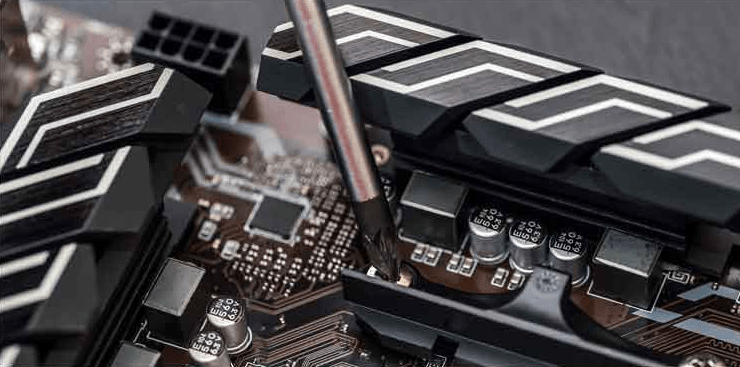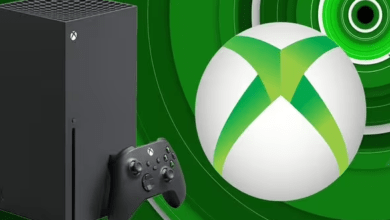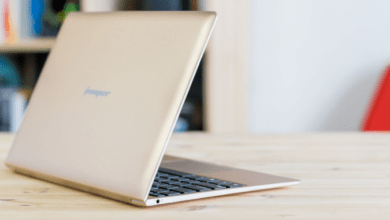PC Won’t Turn On But Motherboard Light Is On Best Info In 2024

Is your PC won’t turn on but motherboard light is on refusing to boot up, leaving you scratching your head in frustration? You’re not alone. One of the most perplexing issues that PC users encounter is when their computer won’t turn on, but the motherboard light remains illuminated. It’s a puzzling situation that can make even the most tech-savvy individuals feel stumped.
But fear not! In this blog post, we’ll explore the common reasons behind this problem and provide some handy troubleshooting steps to help you get your PC back up and running in no time. So grab a cup of coffee and let’s dive into the world of computers and motherboards as we unravel this mysterious conundrum!
Common Reasons For A PC Not Turning On
There’s nothing more frustrating than pressing the power button on your PC and getting no response. It can leave you scratching your head, wondering what went wrong. Here are some common reasons why your PC may not be turning on despite the motherboard light being on.A flawed power supply could be to be faulted. If the power supply is not delivering enough energy to all the components, it can prevent your system from powering up properly. It’s worth checking if any wires are loose or if there are any signs of damage.
Another possible culprit is a defective motherboard. Issues with the motherboard can cause power failure and prevent your PC from starting up. Inspect it carefully for any physical damage or burnt out capacitors. Additionally, faulty RAM modules could also be causing the issue. Try removing and reseating them one at a time to see if this resolves the problem. Faulty RAM sticks often lead to boot failures.
Furthermore, an overheating CPU could trigger automatic shut down as a safety measure, preventing your computer from turning on again until it has cooled down sufficiently. Ensure that all fans are working correctly and clean out any dust buildup in order to avoid heat-related issues.
Damaged or disconnected cables may impede proper power distribution within your system, resulting in startup problems. Check all connections thoroughly – from the wall socket to every component inside your PC – ensuring everything is securely plugged in. Remember that troubleshooting hardware issues requires caution and technical knowledge; always consult professionals when necessary.
Troubleshooting Steps
When your PC refuses to turn on despite the motherboard light being on, it can be frustrating and perplexing. However, before rushing to the nearest computer repair shop or assuming the worst, there are a few troubleshooting steps you can take to potentially resolve the issue. Check all power connections. Ensure that both ends of the power cable connecting your PC to an electrical outlet are secure. Additionally, verify that any other cables or peripherals attached to your computer are properly plugged in.
Next, try a different power source. Sometimes faulty outlets or surge protectors can prevent your PC from receiving sufficient power. Plug your computer into another outlet or switch out surge protectors if possible. If these basic checks don’t yield results, move on to inspecting internal components. Start by disconnecting all external devices such as USB drives and printers. Then open up your PC’s case and carefully remove and reseat RAM modules and graphics cards.
Another important step is clearing dust buildup inside your machine using compressed air or a soft brush. Dust accumulation can cause overheating issues which may prevent proper boot-up. Additionally, check for any loose connections between internal components such as cables attaching hard drives or SSDs. Consider resetting the CMOS battery on your motherboard by removing it for a few seconds and then reinstalling it securely.
How To Identify If The Motherboard Light Is On?
When troubleshooting why your PC won’t turn on, one crucial step is to determine if the motherboard light is on. The motherboard light serves as an indicator that power is reaching the system. Here’s how you can identify if the motherboard light is on:
1. Check for a visible light: Begin by examining your computer’s case or motherboard for any visible LED lights. These lights are typically located near the power supply connectors or along the edge of the board.
2. Look for color variations: Different motherboards may have different colors to indicate whether they are receiving power or not. Common colors include green, red, and orange.
3. Consult your motherboard manual: If you’re unsure about where to find the LED indicators or what their specific colors mean, refer to your motherboard manual. It will provide detailed information about these indicators and help you decode any potential error messages.
4. Observe blinking patterns: In some cases, a flashing LED pattern might indicate a specific issue with your hardware configuration or power supply unit (PSU).
Remember that while a lit motherboard light suggests that there is power flowing through your system, it does not guarantee that all components are functioning correctly or if there are issues elsewhere in your PC setup.
Solutions For When The Motherboard Light Is On But PC Won’t Turn On
So, you’ve encountered the frustrating situation where your PC won’t turn on despite the motherboard light being on. Don’t panic! There are several potential solutions to get your computer up and running again. Check all connections and make sure everything is securely plugged in. Sometimes a loose power cable or RAM stick can cause this issue. Disconnect and reconnect all cables, including the power cord, monitor cable, and peripherals.
Next, try resetting the CMOS (Complementary Metal-Oxide-Semiconductor) settings. To do this, locate the CMOS battery on your motherboard and remove it for a few minutes before putting it back in place. This simple step can often fix any configuration problems that may be preventing your PC from powering on. If that doesn’t work, consider testing with a different power supply unit (PSU). Faulty PSUs are a common culprit when it comes to PCs not turning on properly. Borrow one from another device or consider purchasing a new PSU if necessary.
Another possible solution is to remove any recently installed hardware or components. Incompatible or faulty additions can disrupt proper booting processes. Sometimes issues with the BIOS firmware can also prevent your PC from turning on correctly. Try updating or flashing the BIOS using instructions provided by your motherboard manufacturer.
If none of these troubleshooting steps resolve the problem, seeking professional assistance might be necessary. A trained technician will have specialized tools and expertise to diagnose and repair more complex issues with your computer’s hardware. Remember to remain patient throughout this process as finding an exact solution may take some trial-and-error experimentation.
Preventative Measures To Avoid Future Issues
When it comes to ensuring that your PC stays in good working condition, taking preventative measures is key. By implementing a few simple steps, you can avoid future issues and keep your computer running smoothly. First and foremost, make sure you have a reliable power supply. Investing in a high-quality unit with sufficient wattage will provide stable power to your motherboard and other components. This can help prevent any unexpected shutdowns or failures.
Regularly cleaning your PC is also crucial for its longevity. Dust and debris can accumulate inside the case, potentially causing overheating and damage to sensitive parts. Use compressed air or an anti-static brush to gently remove any buildup from fans, vents, and heat sinks.
Another important measure is keeping your software up-to-date. Regularly installing updates for your operating system and applications ensures that you have the latest security patches and bug fixes. This helps protect against potential vulnerabilities that could lead to system malfunctions. Furthermore, practicing safe browsing habits is essential in preventing malware infections or other harmful attacks on your system. Be cautious when clicking on suspicious links or downloading unknown files as they may contain viruses or malicious software.
Investing in surge protectors or uninterruptible power supplies (UPS) can safeguard against sudden power surges or outages which could cause damage to your computer’s components. By following these preventative measures consistently, you can minimize the chances of encountering issues where your PC won’t turn on despite the motherboard light being on!
Conclusion
In this article, we have explored the common issue of a PC not turning on despite the motherboard light being on. We have discussed several possible reasons for this problem and provided troubleshooting steps to help you identify and rectify the issue.
Remember, when troubleshooting, always start with the basics such as checking power connections and ensuring that all components are properly seated. If these initial steps don’t solve the problem, it may be necessary to delve deeper into more advanced troubleshooting techniques or seek professional assistance.
While encountering a situation where your PC won’t turn on can be frustrating, it is important to remain calm and methodical in your approach. By following the steps outlined in this article, you can increase your chances of successfully resolving the issue and getting your computer back up and running again.
Additionally, we have highlighted some preventive measures that you can take to avoid future occurrences of this problem. Regularly cleaning out dust from your computer’s internal components, keeping software updated, and investing in a high-quality power supply are just a few ways to minimize the risk of experiencing issues with your PC’s power. Remember that every computer setup is unique, so what works for one person may not work for another. It’s essential to adapt these solutions based on individual circumstances or consult an expert if needed.
By staying informed about potential causes and solutions for a PC that won’t turn on despite having a motherboard light illuminated, you’ll be better equipped to troubleshoot any future problems effectively.
So don’t let a seemingly daunting technical issue discourage you! With patience and persistence – along with our helpful tips – you’ll soon have your PC powering up without any hiccups.




